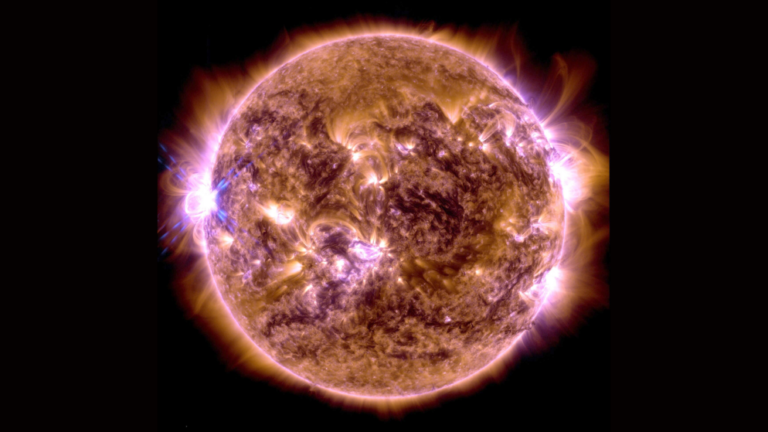Even while Sunday’s flare fell short of the record-breaking one that occurred just a few days ago, it was still strong enough to place NASA in its hardest category.
The Sun had a triumphant conclusion to the year 2023. On the 31st of December, 2023, our favorite yellow dwarf unleashed a powerful solar flare that reached its peak at 4:55 p.m. Eastern Standard Time. This year’s final dazzling flash of radiation served as an appropriate marker for a period of “peak activity” that began at the beginning of the previous year and is not anticipated to come to a stop until the latter half of 2024 by most estimates.
Atmospheric Imaging Assembly (AIA), a four-telescope array that operates predominantly in the extreme ultraviolet region, was utilized by the Solar Dynamics Observatory (SDO) of the National Aeronautics and Space Administration (NASA) to photograph last Sunday’s flare. Because of this, the Solar Dynamics Observatory was able to capture a stunningly detailed image of the Sun in all of its flaming grandeur, with the New Year’s Eve flare visible on the far left. According to NASA, the image that is seen above shows a subset of extreme ultraviolet light that shines a spotlight on the extremely hot material that is present in flares. This can be seen in a variety of tints of yellow and orange tones.
There was another X-class flare that occurred on December 14, 2023, and it was certified by NASA and the National Oceanic and Atmospheric Administration (NOAA) to be the greatest flare that has been observed in the past six years. This incident, which was classified as an X5.0 flare, caught the tailwind of that flame. The flare that occurred on December 14 was so powerful that it caused radio operations to be disrupted across the country for approximately two hours after it reached its height. Workers at the Center Weather Service Unit (CWSU) of the Federal Aviation Administration in Cleveland, Ohio were so impressed by the impacts of the flare that they reported to the National Oceanic and Atmospheric Administration (NOAA) that they had “never seen anything like” it.

In light of the fact that the Sun is still in the midst of its phase of peak activity, we may anticipate that similar occurrences will take place throughout substantially of this year. The magnetic field of the Sun tends to shift through what are known as “solar cycles,” and these cycles typically endure for approximately 11 years. There is a time of enhanced activity known as the “solar maximum” that occurs during each cycle, despite the fact that the intensity of these cycles varies, as demonstrated by the very feeble Solar Cycle 24. In the beginning, it was anticipated that this would occur in the year 2025; however, our current Solar Cycle 2025 began to gain momentum in the year 2022, which led to the solar maximum occurring considerably earlier than anticipated.
How does this affect those of us who live on this planet? Up until around October 2024, we can anticipate seeing more spectacular displays of solar phenomena that range from merely visually appealing to outright hazardous. As a result of the fact that solar maximums are characterized by increasing rates of sunspots and solar flares, this period of the solar cycle is certain to produce some breathtaking photographs of the hyperactive corona of the Sun. On the other hand, as we discovered the previous month, solar flares have the capability of disrupting essential communications on Earth. Coronal mass ejections, also known as CMEs, are a near relative of solar flares. Additionally, they have the ability to impair public safety, weather tracking, and aerospace operations by releasing charged particles into space. This phenomenon has the potential to cause geomagnetic storms that are disruptive.

